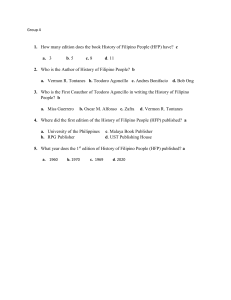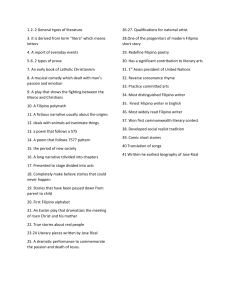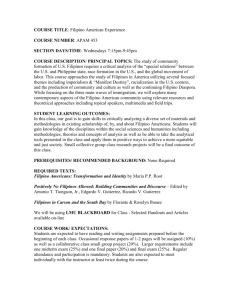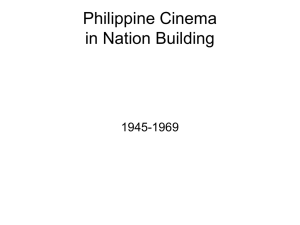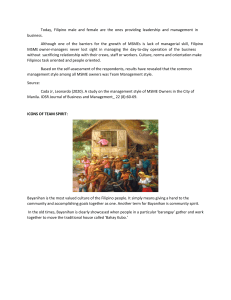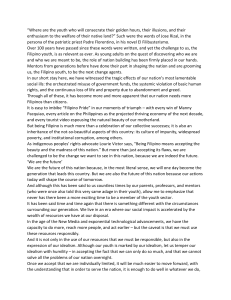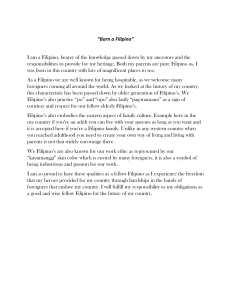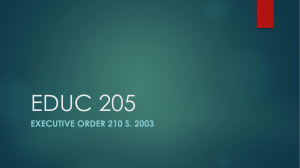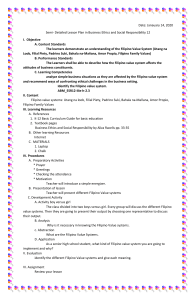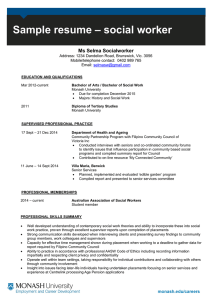Achieving World-Class Targets with the CVIF Dynamic Learning
advertisement
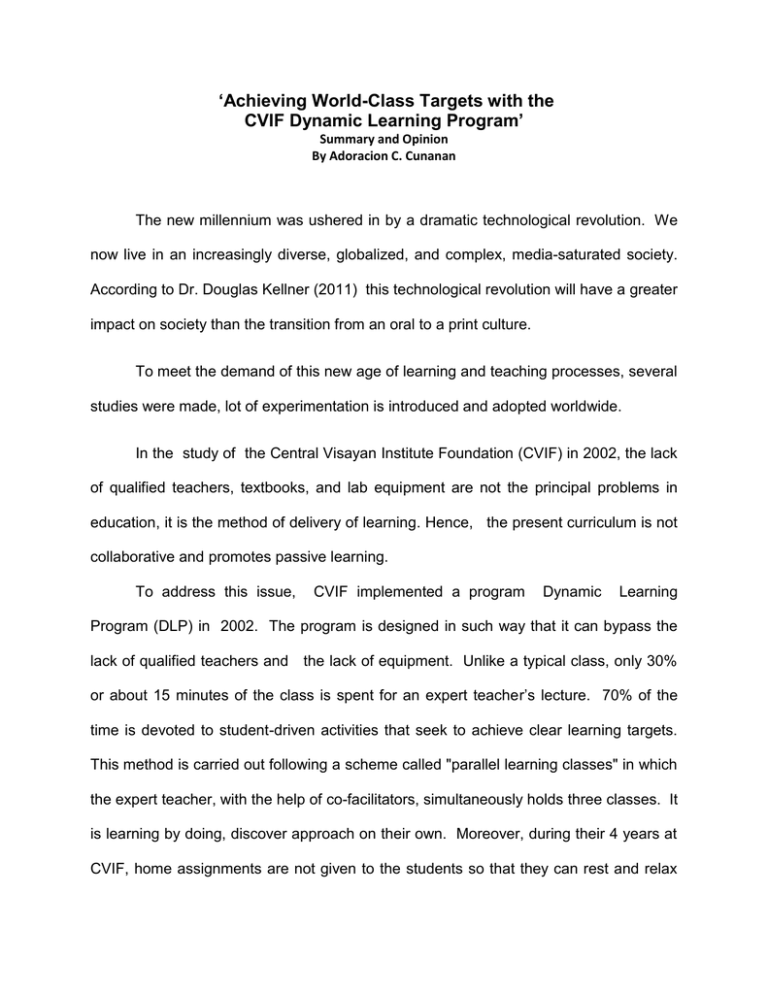
‘Achieving World-Class Targets with the CVIF Dynamic Learning Program’ Summary and Opinion By Adoracion C. Cunanan The new millennium was ushered in by a dramatic technological revolution. We now live in an increasingly diverse, globalized, and complex, media-saturated society. According to Dr. Douglas Kellner (2011) this technological revolution will have a greater impact on society than the transition from an oral to a print culture. To meet the demand of this new age of learning and teaching processes, several studies were made, lot of experimentation is introduced and adopted worldwide. In the study of the Central Visayan Institute Foundation (CVIF) in 2002, the lack of qualified teachers, textbooks, and lab equipment are not the principal problems in education, it is the method of delivery of learning. Hence, the present curriculum is not collaborative and promotes passive learning. To address this issue, CVIF implemented a program Dynamic Learning Program (DLP) in 2002. The program is designed in such way that it can bypass the lack of qualified teachers and the lack of equipment. Unlike a typical class, only 30% or about 15 minutes of the class is spent for an expert teacher’s lecture. 70% of the time is devoted to student-driven activities that seek to achieve clear learning targets. This method is carried out following a scheme called "parallel learning classes" in which the expert teacher, with the help of co-facilitators, simultaneously holds three classes. It is learning by doing, discover approach on their own. Moreover, during their 4 years at CVIF, home assignments are not given to the students so that they can rest and relax with their families. The DLP does not only tackle science and mathematics. It also covers other areas such as music, the arts, and physical education. It is a synthesis of different pedagogical theories. They got the best features of these different theories with the main purpose of having a program effective for Filipino students in Filipino classrooms with Filipino teachers in the Filipino situation. On its first year of implementation, four (4) seniors of CVIF were able to pass the UP college admission test. This number continued to rise until its 6th year of implementation where 10% of CVIF is graduating students were UPCAT passers. Up until the present, CVIF maintains its track record of an average of 10% of its graduating students passing the UP entrance exams. Furthermore, from having only one (1) student entering the 90 percentile and above in the DepED nationwide exam before the implementation of DLP in 2001, the number of CVIF students increased to 12.3% in 2007 and continued to increase consistently in the succeeding years. In 2010, 51% of CVIF students were in the 90 percentile and above. It is worthy to note that although CVIF is a private school, 90% of its incoming freshmen come from public elementary schools around town and only around 42% of the parents/guardians entered college, which shows a marked lack of home educational support. CVIF-DLP is not a curriculum or a module but a teaching method that is geared towards developing each child to his or her fullest potential. Using the same DepED curriculum, it is designed to improve basic education given the country’s multiple socioeconomic and cultural constraints. It is very impressive to note that CVIF-DLP is a teaching method that is geared towards developing each child to his or her fullest potential, an innovative teaching method that would give Philippine education a boost and help make Filipino students more globally competitive. In my own opinion, student population is one of the many factors to consider in adopting this teaching method. CVIF has very small population as compared to other public schools in Metro Manila. I just cannot imagine what would happen if this method is applied to a populated public schools in Metro Manila. Would it produce the same positive result as that of CVIF? Support coming from private organizations is also another factor to consider, CVIF took a lot of support from different organizations such as the Smart Communications, Inc. (Smart) and PLDT-Smart Foundation (PSF), the leading wireless services provider which provide internet service in CVIF campus and most of all, the biggest factor that made CVIF-DLP a success is for having administrators who students. a committed school are not after the school’s income but for the welfare of their
